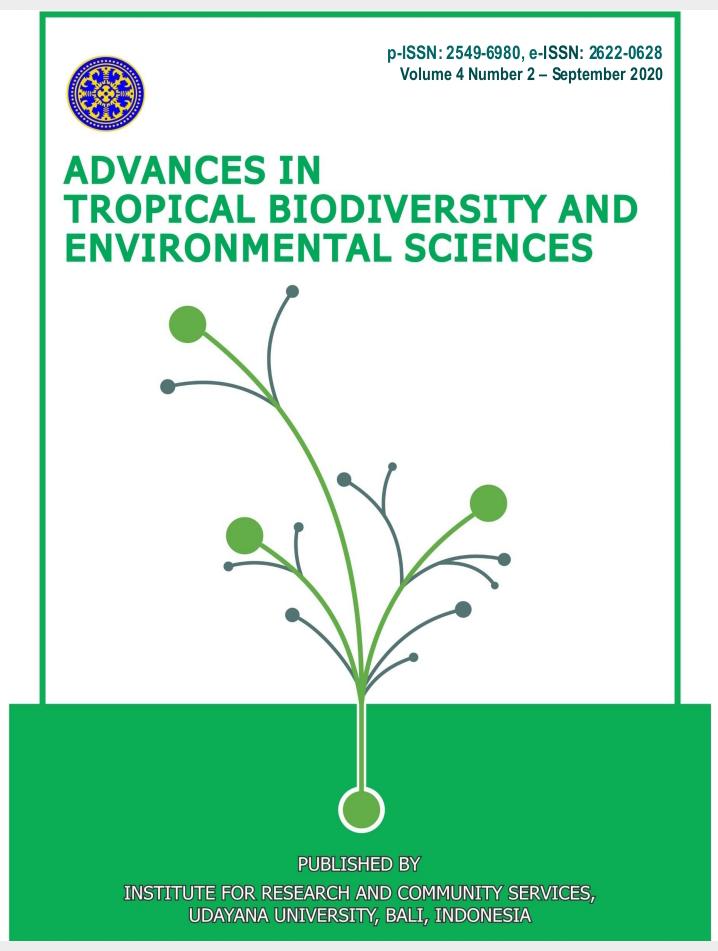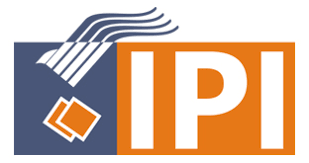Induced Mutagenesis in Yellow Flowering Marigold with Colchicine in Hydrogen Peroxide
Abstract
Marigold flower has many benefits in many aspects of life in Bali Island (Indonesia) including often used in religious ceremonial activities. For controlling plant pests and diseases, marigold is planted on the sidelines or on the edge of a land as an attractant crop to invite natural enemies and marigold also can produce certain substance which can reduce the incidence of nematode. In inducing mutagenesis in this research, the seeds of marigold were soaked in solution of colchicine with hydrogen peroxide as its solvent. The results of this research indicated that the treatments caused the formation of chlorophyll mutant and an increase in the length of flower diameter. Both the control and treated plant samples were attacked by leaf miner, giant land snail, virus-like disease and botrytis flower blight disease.
Downloads
References
[2] Rahman KM, H Rizvi, RA Ansari. 2013. Role of salicylic acid and phenols in the resistance of Tagetes species against Meloydogyne incognita. Indian J. Nematology, 43(1): 82-85.
[3] Dixit P, T Salini, VK Navneet. 2013. A brief study on marigold (Tagetes species): A review. Int. Res. J. Pharm, 4(1): 43-48.
[4] Pankaj G, N Vasudewa. 2012. Marigold, a potential ornamental plant drug. Hamdard Medicus, 55(1): 45-59.
[5] Robert HA, TC Vlahopic, MT Khan. 2008. The use of marigold therapy for podiatric skin conditions. The foot & ankle J, 1(7): 1.
[6] Firdose KR, SR Ghatge, MS Nimbalkar, GB Dixit. 2015. Mutational changes in Delphinium malabaricum (HUTH.) MUNZ: a potential ornamental plant. J. Horti. Res, 23(2): 5-15.
[7] Anbu SY, CV Raju. 2017. Chlorophyll mutation induced in rice by chemical mutagens. Plant archives, 17(1): 641-642.
[8] Sonu G, MR Wani, S Khan. 2019. Frequency and spectrum of chlorophyll mutations induced by single and combination treatments of gamma rays and EMS in urdbean. Asian J. Biol. Sci, 12(2): 156-163.
[9] Bates HG. 1939. Polyploid induced by colchicine and its economic possibilities. Nature, 3642: 315-316.
[10] Pharmawati, Dewi. 2018. Chromosome doubling in marigold. Biosfera: A scientific journal in bioscience 35(3): 153-157. (In Indonesian language).
[11] Jin WH, AR Ferguson, BG Murray, Y Jia, PM Datson, Z Zhang. 2011. Induced polyploidy dramatically increase in size and alters the shape of fruit in Actinidia chinensis. Annals of botany, 109: 169-179.
[12] Variya MV, JJ Patel. 2012. Evaluation of chrysanthemum and marigold as trap crops against leaf miner (Liriomiza trifolii Burgess) in tomato. AGRES-An intern, 1(4): 514-521.
[13] Ara RM, MMH Masud, AM Akanda. 2012. Detection of plant viruses in some ornamental plants that acts as alternate hosts. The Agriculturists, 10(2): 46-54.
[14] Sultana R, AM Akanda, MAS Haque, A Majumdar, MAZA Munsur. 2014. An investigation to virus-like diseases of marigold. J. Bios Agric Res, 2(1): 23-35.
[15] Aktaruzzaman MD, T Afroz, KB Sup, SH Dong. 2018. First report of gray mold caused by Botrytis cinerea on marigold (Tagetes erecta) in Korea. Plant Disease. American Phytophatological Society













